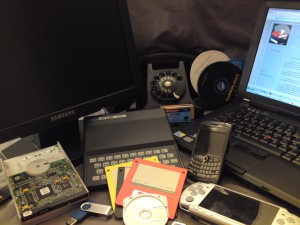Nuclear Energy
Part II
Mid-afternoon, on March 11, 2011, Sendai, Japan was hit by a 9.0 earthquake and soon after a tsunami with 33 foot waves, which made landfall between 10 to 30 minutes after the earthquake. The aftershocks have continued, many measuring more than 6 on the Richter magnitude scale. Since then, the news has been dominated by headlines dealing with the aftermath of these unprecedented strikes of nature, and their effect on Japan as a whole, and on the nation’s nuclear facilities. http://bit.ly/h6iFWw
The final impact of the earthquake and tsunami will not be known for quite some time, but within hours of these catastrophic events, those championing the end of nuclear power had found their bully pulpit. “No Nukes!” was soon plastered around the internet, as pundits began to clamor over what might happen at Fukushima Dai-ichi Nuclear Power Plant.
Undoubtedly, what has happened at Fukushima Dai-ichi has been disastrous, and for some terrifying, though not viewed as life threatening, despite increased radiation levels having been detected in the air, water, and land in the surrounding area and far beyond. However, it should clearly be understood that failure in Japan, was man made; and should not be viewed as an indictment of nuclear energy.
The Japanese government and officials from the Tokyo Electric Company, which operates the Fukushima Dai-ichi Nuclear Power Plant that was commissioned in 1971, have admitted that they were not sufficiently prepared to deal with this crisis and that their safety standards were not adequate, having discounted scientific data which predicted the possibility of such an earthquake and tsunami. They also acknowledged having falsified reports, to the Japanese Nuclear and Industrial Safety Agency, on February 28th, 2011, stating that they had submitted fake inspection and repair reports. One of the components included the power boards for the reactor’s temperature control valves, and components of cooling systems. http://fxn.ws/h0EfFi, http://bit.ly/h1vRzp
As previously mentioned on these pages, http://thatisallfornow.com/?p=2520 Three Mile Island, the worst nuclear accident in the United States, was due to human error, just as we are now seeing at Fukushima Dai-ichi Nuclear Power Plant. The fear generated by misunderstanding over what occurred, at Three Mile Island, retarded nuclear growth in the United States, as our demand for energy grew. Currently, in the United States, over twenty percent of our need for energy is met with nuclear power. Those screaming for an end to nuclear energy do not offer an alternative.
Unquestionably, due to the poor choices made by those in charge of Fukushima Dai-ichi Nuclear Power Plant, the world has witnessed, if I may, the Perfect Nuclear Storm. What could go wrong at Fukushima Dai-ichi Nuclear Power Plant has gone wrong. If the earthquake had not triggered a tsunami, or if the tsunami had not knocked out the back-up power source, if neither the earthquake or tsunami had struck while the plant was in violation of numerous standards, perhaps we would not now be looking at photographs of worried mother’s standing in long lines to buy bottled water for their babies, or agents inspecting produce on the tarmacs in Los Angeles, or Greenpeace plastering their website with “No Nuke” signs; but what could go wrong has gone wrong.
We are now left to decide what this means for us as consumers and citizens. I have been privileged to tour nuclear plants in the United States; and while confidentiality agreements curtail what I may write, I can tell you how extremely impressed I have been by the seriousness of plant workers and the stringent security measures which are in place. There is a built in redundancy working to ensure the safe well-being of our nuclear facilities, the employees, and surrounding areas.
Nuclear energy is critical to the United States, and construction on new nuclear power plants (AP1000, by Westinghouse) is on-going. Our need for energy is not going to dissipate. Are we going to continue to wage war for oil or destroy pristine natural reserves seeking oil; or are we going to engage the twenty-first century embracing clean and renewable nuclear energy?
There was much loss in the earthquake and tsunami of March 11. Of greatest concern are the thousands of lost lives, so many yet unaccounted for. As houses were washed into the sea, cargo containers tossed about like match sticks, and bridges collapsed as if they had been made out of paper and through all of the images which we have seen, no one has suggested that Sendai not be rebuilt. Though all of these structures failed, it is understood that Japan has endured an act of God, and when the grieving is finished, with the dead buried and rubble cleared, Sendai will rise again. The failure at Fukushima Dai-ichi Nuclear Power Plant, while tragic, does not and should not suggest that nuclear energy should be abandoned, any more than the collapse of a bridge should suggest that we abandon bridge building in general.
Should you be concerned by what happened in Japan? Yes, but you should also be aware. Our best source for information regarding nuclear energy is The Nuclear Energy Institute http://bit.ly/i850VE . It is easy to jump to conclusions and be frightened by the breaking news banners, but before reacting take a few minutes to see what the experts have to say and stay Connected.











